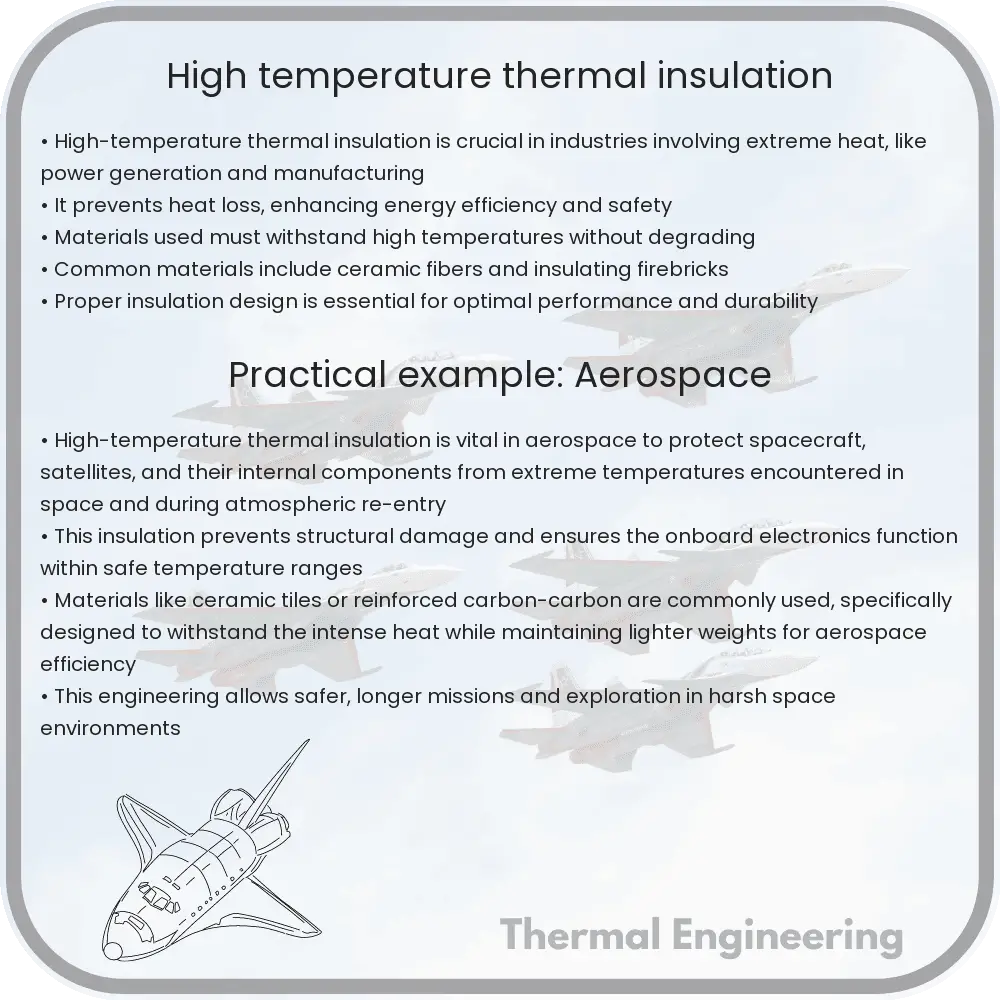Explore the essentials of high-temperature thermal insulation, its materials, applications, and principles for enhanced energy efficiency and safety.

Understanding High-Temperature Thermal Insulation
High-temperature thermal insulation is an engineering solution designed to limit heat transfer between objects in thermal contact or in the range of radiative influence. Such types of insulation are crucial for systems operating at high temperatures, typically above 1000°C, such as in industrial furnaces, boilers, and high-speed aircraft. The effectiveness of high-temperature thermal insulation is pivotal not only for energy conservation but also for safety and improving the lifespan of equipment.
Types of High-Temperature Thermal Insulation Materials
Several materials are employed in high-temperature thermal insulation, each chosen based on its thermal conductivity, chemical stability, and physical properties at high temperatures:
- Ceramic Fibers: These materials are very effective at insulation and can withstand temperatures up to 2300°F (1260°C). They are lightweight and generally composed of alumina-silica.
- Calcium Silicate: Known for its high structural strength and thermal efficiency, calcium silicate can handle temperatures up to 1200°F (650°C). It is commonly used in piping insulation and industrial applications.
- Mineral Wool: Made from molten glass, stone, or industrial waste, mineral wool is capable of high performance at temperatures ranging from 600°F to 1800°F (315°C to 982°C) and is widely used in both thermal and sound insulation.
- Aerogels: Known for their low thermal conductivity and high temperature resistance, silica aerogels can withstand temperatures over 2000°F (1093°C), though their mechanical strength is less than other insulative materials.
Principles of Heat Transfer in High-Temperature Applications
In high-temperature environments, thermal insulation works by combating the three modes of heat transfer: conduction, convection, and radiation:
- Conduction: Heat transfer through direct contact. Insulation reduces this by having materials with low thermal conductivities.
- Convection: Heat transfer through fluids (liquids or gases). Effective insulation minimizes air movement or traps it in small, enclosed spaces.
- Radiation: Transfer of heat through electromagnetic waves. Reflective surfaces or materials that absorb and emit minimal radiation are preferred in high-temperature insulations.
Applications of High-Temperature Thermal Insulation
The applications of high-temperature thermal insulation are vast and critical in various industrial sectors:
- Energy Production: In power plants, effective insulation of boilers, steam pipes, and turbines leads to significant energy savings and reduced greenhouse gas emissions.
- Manufacturing Processes: Industries such as metal, glass, and ceramics require high-temperature insulation to improve the efficiency and quality of their products.
- Aerospace: High-speed aircraft and spacecraft use high-temperature insulation to protect equipment and enhance performance in extreme temperature conditions.
- Automotive: Insulation in car exhaust systems and engine compartments improves vehicle performance and passenger comfort.
Challenges and Innovations
Despite the effectiveness of existing materials, high-temperature insulation faces challenges such as:
- Durability: High temperatures can degrade materials over time, decreasing their insulative properties.
- Cost: Some high-performance insulation materials can be costly, limiting their use in certain applications.
- Installation Complexity: Applying and maintaining insulation in high-temperature environments can be difficult, requiring specialized skills and tools.
Innovations in material science and technology continue to evolve, striving to address these challenges. New materials and composites, better fabrication techniques, and improved performance metrics are constantly being developed, pushing the boundaries of what high-temperature thermal insulation can achieve.
Conclusion
High-temperature thermal insulation is key to energy efficiency, safety, and the operational success of many industrial applications. As technology progresses, the materials and methods used in this field continue to improve, offering more effective and sustainable options. Understanding the basics of these insulation techniques allows engineers and scientists to develop better solutions and enhance the performance of high-temperature systems.